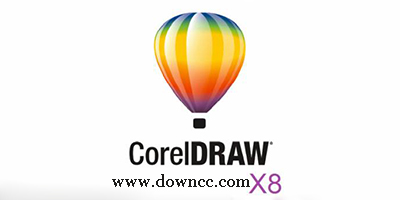
coreldraw x8是一款非常好用的平面绘图工具,软件界面清晰功能强大,多种工具可快速作图,图形效果展示修改应用范围广泛,操作简单快速作图。coreldraw x8软件合集整合了多款coreldraw x8软件内容,内含cdr x8绿色版、cdr x8注册机、cdrx8修改版免费下载等。多种软件了供下载体验。
精彩推荐:coreldraw插件、coreldraw x6、coreldraw x5、coreldraw x4、coreldraw教程.....
527.34M / 2023-03-23 / 中文版 for 32/64位
cdrx8中文正式版是一款能够广泛运用到绘图与实践当中的排版工具,同时具有矢量图的编辑效果,支持平面设计工作,让你在各类设计过程中能够获得不错的使用体验,轻松制作出自己满意的图纸,拥有全面的图片编辑功能,同
226KB / 2018-03-22 / 32/64位
coreldrawx8一键转曲插件是一个免费的滤镜插件程序。其主要功能是可以简历出多种曲线弧度的图形。同时具备印章制作功能!支持32位和64位安装程序。欢迎来绿色资源网下载。 转曲插件介绍coreldrawx8一键转曲虽然是CD
527.34M / 2018-03-08 / win7/10 免安装版 (含32/64位)
cdrx8绿色版免安装64是一款实现二维平面设计效果,从而运用到了众多商业用当中起到了不错使用效果,为用户带来了巨大的制作帮助的图像处理软件,能够对位图,矢量图,文本等进行编辑,支持众多图片格式的打开与保存功
1757.81M / 2023-03-13 / 32位 简体中文版
coreldrawx8零售版能够实现众多图像处理操作,支持广告设计以及各类图形图形制作,能够很好的完成各类图像效果,这款零售版让你能够突破30天限制,直接免费永久使用,快来绿色资源网下载吧! coreldrawx8零售版介绍
2170.13M / 2017-10-27 / 32位 win7 简体中文绿色版
coreldrawx8绿色精简版32位是能够让你使用精简版的软件实现所需的日常图像处理操作,同时其内的各项功能能够满足你所需的图像处理操作,如进行抠图,色彩变幻等,适合众多设计行业进行使用,快来绿色资源网下载吧!
13.95M / 2017-08-31 / 高清版
coreldrawx8教程pdf百度云是一个免费的coreldraw教程文件。coreldrawx8绘图软件功能强大,拥有多种电脑绘图功能,可以帮助用户快速绘制需要的图像。对于初次使用coreldrawx8的小伙伴,绿色资源网站带来的文档可以帮助
54.68M / 2017-08-29 / 完整版
coreldrawx8视频教程百度网盘是由绿色资源网小编整理的免费coreldraw教程。本视频文件为各位初次接触coreldrawx8程序的小伙伴提供了专业、详细的操作技巧讲解教程。本站同时提供了coreldrawx8程序常用的快捷键信息。
292.96M / 2023-03-19 / 中文永久免费版_32/64位
coreldrawx864位完美正式版补丁是由绿色资源网小编为大家整理的正式工具。本程序主要功能是帮助大家正常正式coreldrawx8正式版,实现无限期免费使用体验!想要拥有coreldrawx8正式版绘图软件的网友快来本站下载正式补
6.10M / 2016-05-27 / 64位/32位
coreldrawx8缩略图补丁是网友分享的提取自coreldrawx8中文版的CDR缩略图显示插件,无需打开coreldraw,就可以查看CDR文件的缩略图,对于预览coreldraw文件非常实用,需要的用户自行下载吧。 cdrx8缩略图补丁介绍Cor
561KB / 2016-05-05 / 32位/64位
coreldrawx8中文注册机是一款获取cdrx8注册序列号的工具,想要免费使用最新的CorelDRAWGraphicsSuiteX8,那就下载这个注册机吧,所有功能全部开放,值得收藏。软件介绍CorelDRAW?GraphicsSuiteX8相结合,专用于矢量图